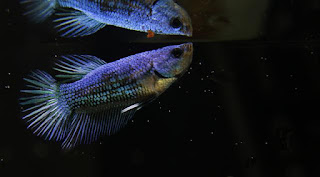Betta splendens is a native of Southeast Asia, including the northern Malay Peninsula, central and eastern Thailand, Kampuchea (Cambodia), and southern Vietnam, according to Witte and Schmidt (1992). The species is confined to Thailand, from the Mae Khlong to Chao Phraya basins, the eastern side of the Cardamom highlands (Cambodia), and from the Isthmus of Kra, according to Vidthayanon (2013), a Thai ichthyologist and senior researcher of biodiversity at WWF Thailand. Betta splendens is a native of Cambodia, Laos, Thailand, and Vietnam, according to a report by Froese and Pauly (2019). Due to human introduction, they are now widespread throughout the neighbouring Malay Peninsula and in nearby areas of Sumatra.
Betta splendens often lives in marshes, floodplains, and paddy fields, which are shallow bodies of water with plenty of vegetation. Bettas were initially discovered and then domesticated by humans because of the historical prominence of rice farming throughout Southeast Asia, which offered a suitable environment for them. This environment likely led to the evolution of the lung-like labyrinth organ, which allows Siamese fighting fish like all members of the suborder Anabantoidei to breathe directly from the air. Because bettas can survive and even thrive in more challenging circumstances than other freshwater fish, they have fewer natural predators and rivals.
The abrupt and dramatic variations in water availability, chemistry, and temperature that characterise the tropical environment of the betta's native habitat. While air temperatures can fluctuate between 15 °C (59 °F) and 40 °C (100 °F), the pH of water can range from mildly acidic (pH 6.9) to strongly alkaline (pH 8.2). The capacity of Siamese fighting fish to effectively colonise bodies of water across the world is due to their exceptional adaptability and durability, which allows them to survive in a range of poisonous or harsh settings.
The aquatic vegetation and surface foliage, such as water lilies and fallen leaves, are what wild bettas love to reside in. Assertive males cohabit by claiming dense patches of vegetation as their domain, and the quantity of plants offers protection from predators and a barrier between them. As well as providing shelter to fry at their earliest and most vulnerable phases, such vegetation also provides protection to females during spawning.




































